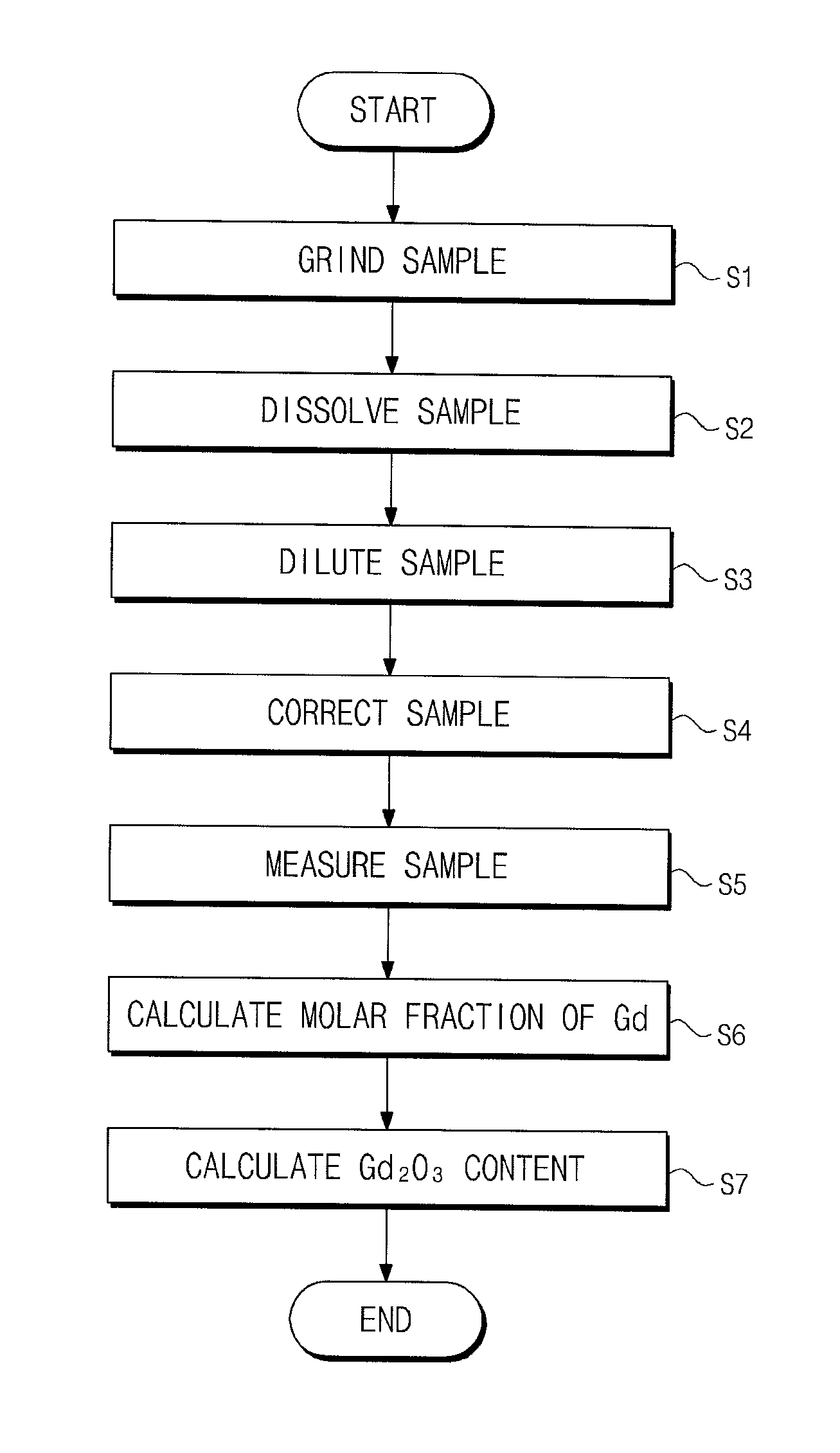Method of measuring gadolinia content using inductively coupled plasma-atomic emission spectrometry
a technology of inductively coupled plasma and gadolinia, which is applied in the direction of spectrometry/spectrophotometry/monochromators, optical radiation measurement, instruments, etc., can solve the problem of difficult to precisely detect gd/sub>2/sub>o/sub>conten
- Summary
- Abstract
- Description
- Claims
- Application Information
AI Technical Summary
Problems solved by technology
Method used
Image
Examples
example
[0030]1) One or more sintered Gd bodies (three in the present example) having different Gd2O3 contents were grounded using a percussion mortar, and then sampled to an appropriate amount.
[0031]2) Six random samplings of the ground Gd having different Gd2O3 contents were carried out, and about 0.10 g thereof was weighed using an analytical balance and then placed in a beaker. 10 ml of nitric acid was added thereto at 1:1, after which the beaker was covered and warmed so that the mixture therein was dissolved. Also, 10 ml of nitric acid was further added thereto at 1:1, as necessary, thus completely dissolving the sample.
[0032]3) The completely dissolved sample was transferred into a 1 l flask and then diluted with distilled water (about 10,000 times dilution in consideration of the ability of the ICP-AES instrument to detect U and Gd elements).
[0033]4) The U and Gd contents of the diluted solution were respectively corrected by the ICP-AES. With reference to Tables 1 to 3 below, becau...
PUM
 Login to View More
Login to View More Abstract
Description
Claims
Application Information
 Login to View More
Login to View More - R&D
- Intellectual Property
- Life Sciences
- Materials
- Tech Scout
- Unparalleled Data Quality
- Higher Quality Content
- 60% Fewer Hallucinations
Browse by: Latest US Patents, China's latest patents, Technical Efficacy Thesaurus, Application Domain, Technology Topic, Popular Technical Reports.
© 2025 PatSnap. All rights reserved.Legal|Privacy policy|Modern Slavery Act Transparency Statement|Sitemap|About US| Contact US: help@patsnap.com



